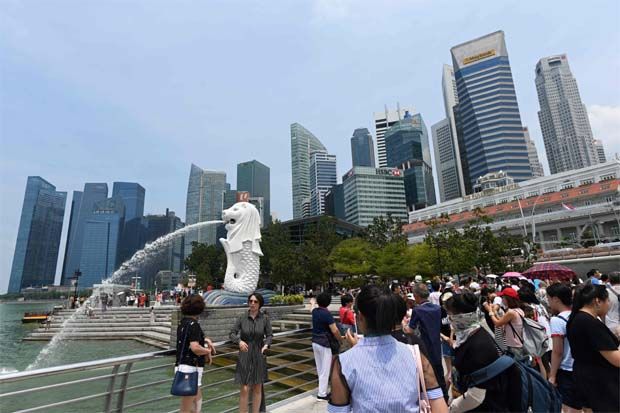Will a labour shortage crimp Singapore’s recovery?
SINGAPORE: After 18 months under what he felt were stifling restrictions in Singapore, German hospitality professional Andre Alexy decided to leave the republic in July last year for a plum position in Dubai.
The role, as food and beverage (F&B) operations manager at Atlantis The Royal, and the chance to be part of an opening team, was too good to pass up. Located at the tip of the tree-shaped island Palm Jumeirah, and set to open this October, the resort is arguably one of the most anticipated hotel openings in the Middle East with a line-up of 17 F&B properties, including eight celebrity chef restaurants.
“After one and a half-years under a lockdown state in Singapore and a restricted environment, I didn’t feel I had the same opportunities as when I’d moved there in March 2019,” said Alexy, 33, who was the former general manager at Japanese restaurant Koma at Marina Bay Sands.
“I didn’t want to get stuck in the same position for too long, and lose time on the way of my career path.”
He has been in the hospitality industry since he was 16.
“The move was about going to an environment where they are keeping the economy running, with tourists, an international clientele and a lively F&B scene. Their pandemic measures were also far more moderate and manageable,” he added.
Alexy is part of a sizeable pool of workers who have left Singapore for what they see as greener pastures during the pandemic, citing various reasons from travel restrictions and tighter foreign labour policies to job insecurity and rising living costs.
The total foreign workforce size – excluding domestic workers and those in the construction, marine and process sectors – shrank to 635,700 as at December last year, the smallest in a decade and down from the pre-pandemic high of 795,500 in 2019.
Despite the resulting labour and skills crunch as well as record number of job vacancies in December last year – 114,000, more than double from a year earlier – some form of recovery is expected in the months to come, as Singapore undergoes a significant easing of both domestic and border curbs.
But the relaxation of measures may also strain consumer-facing industries as business picks up and hiring demand follows suit, as Manpower Minister Tan See Leng pointed out earlier this month.
These include the hospitality and F&B sectors, where industry players note that the roles facing the worst manpower crunch are those typically filled by foreigners.
Observers said such workers are now being lured to destinations such as Dubai which have stepped up their tourism recovery efforts and are offering a wide range of industry opportunities.
“The challenge is not so much the issue of hiring local or relying on foreign talent,” said Temasek Polytechnic’s senior lecturer in hospitality and tourism management Benjamin Cassim.
“As service industries that basically operate 24 hours a day and seven days a week, the real challenge is convincing people that they can build successful and fulfilling careers there.”
Data on falling foreign workforce numbers in Singapore has, of late, been countered with anecdotes of an influx of white-collar finance professionals fleeing Hong Kong’s tough zero-Covid-19 restrictions.
On the other end of the spectrum is Dubai, the United Arab Emirates’ largest city, which reopened to tourism as early as August 2020 and has embraced expatriate-friendly measures like remote work visas.
“Dubai took the riskier approach, opening up everything after about three months and it paid off very well for them,” noted Alexy, who moved there with his girlfriend, who is also in hospitality.
He cited the attractive and tax-free packages – including generous housing allowances, medical insurance and paid flights back home – as a big draw.
“That’s why so many people move here, because there are also so many opportunities to grow here,” he said.
Singapore, with its more cautious, middle-ground approach to tackling Covid-19, has taken a beating on the tourism front, attracting some 330,000 international visitors last year in contrast to 19.1 million visitors in 2019. — The Straits Times/ANN


 Thailand
Thailand




